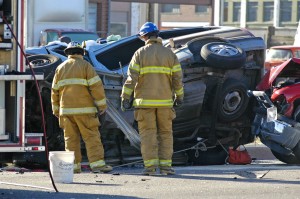 One of the most dangerous scenarios, in a car accident, is occupant ejection from the vehicle. Seat belts help to prevent ejection, but a defective seat belt and other vehicle defects can lead to ejection of belted occupants. Similarly, child car seats help to prevent ejection infants and toddlers, but if the seat is not properly installed, if the seat is defective, or if the seat belt or anchors used to secure the car seat fail, the child can still be thrown from the vehicle.
One of the most dangerous scenarios, in a car accident, is occupant ejection from the vehicle. Seat belts help to prevent ejection, but a defective seat belt and other vehicle defects can lead to ejection of belted occupants. Similarly, child car seats help to prevent ejection infants and toddlers, but if the seat is not properly installed, if the seat is defective, or if the seat belt or anchors used to secure the car seat fail, the child can still be thrown from the vehicle.
Defects Leading to Ejection and Partial Ejection
Defective vehicles and defective vehicle parts that can lead to occupant ejection include:
- Poor roof crush resistance
- Faulty door latch
- Defective seat belt
- Defective child safety seat
Consequences of Ejection and Partial Ejection
When ejected from a vehicle you suffer at least one additional impact which can be worse than the initial crash. People who are thrown from vehicles may strike objects outside the vehicle, be struck by other vehicles, or even be crushed by the vehicle they were riding in.
Those who are partially ejected can be dragged along by the vehicle, slammed into other objects and vehicles, ground into the pavement, and may be partially crushed by the original vehicle.
Common ejection injuries include:
- Amputations
- Severe road rash
- Crush injuries
- Brain injury
- Spinal cord injury
- Broken bones and fractures
- Internal injuries
Finding a Highly Qualified Attorney
If you have suffered ejection injuries or lost a loved one to a vehicle ejection during a crash, your attorney should investigate to determine whether a defective vehicle or safety equipment contributed to the outcome of the accident. To find an experienced auto accident attorney with a proven track record of success in securing substantial compensation for vehicle ejection lawsuits victims, please contact AccidentAttorneys.org today.















